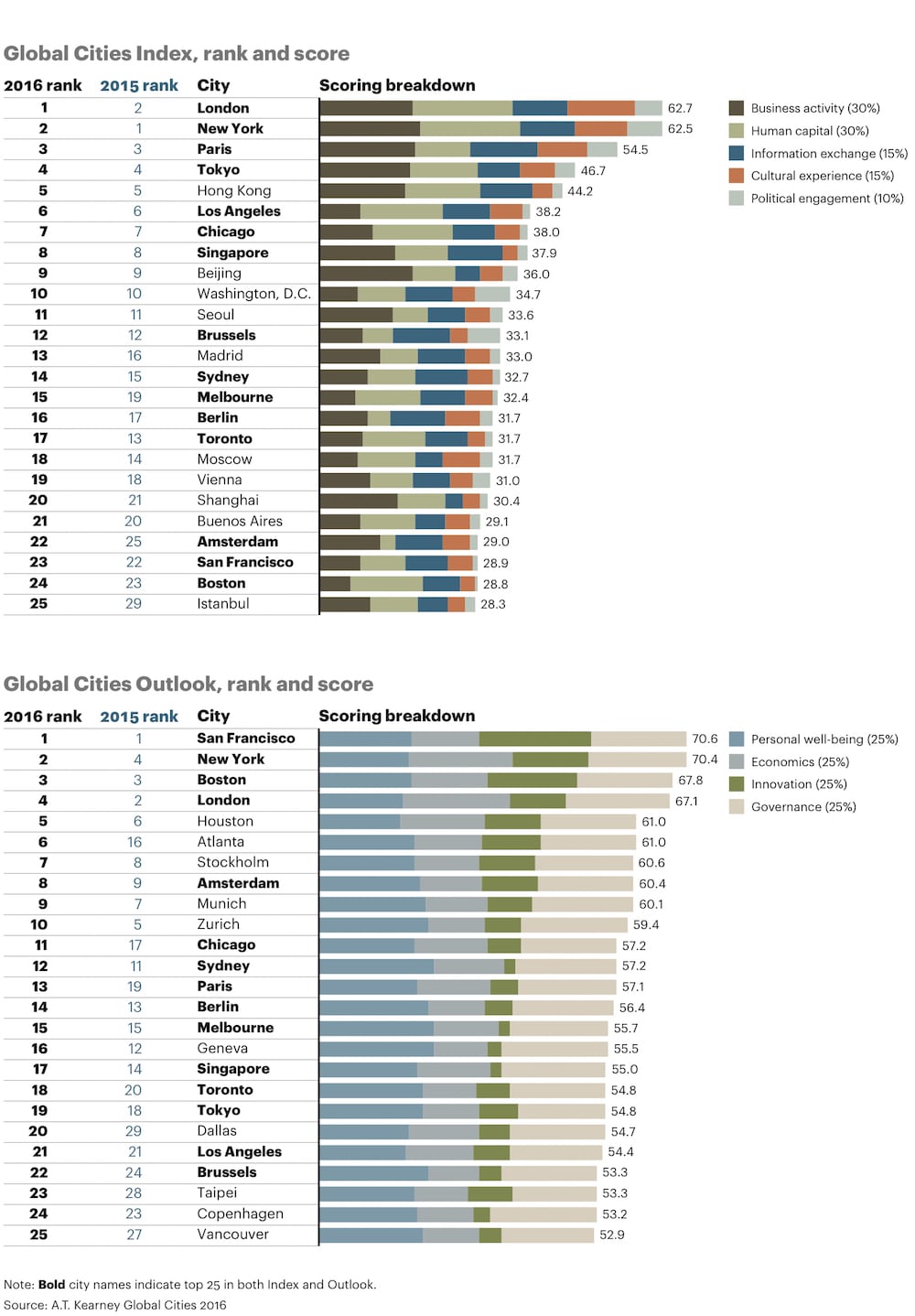Skift Take
The annual A.T. Kearney Global Cities Index shows destinations their competitive positioning on a worldwide basis to inform their strategy to attract more corporate investment and business events.
London is the world’s best-performing city and San Francisco has the best long-term potential — in terms of economics, talent, culture, technology, well-being, and politics — according to the 6th annual A.T. Kearney Global Cities Index released today.
Also, this is the first year that the Index brings data to bear on what makes a “smart city” smarter than others.
The A.T. Kearney rankings are important for multinational companies to best determine where to open new offices, relocate talent, invest in new technology, and host large conventions. It’s important for city governments, economic development agencies, and convention bureaus to see how they move through the rankings each year.
The Index is comprised of two parts:
The Global Cities Index (GCI) ranks 125 cities according to 27 metrics across five dimensions, including business activity, human capital, information exchange, cultural experience, and political engagement.
The Global Cities Outlook (GCO) examines 125 cities and ranks 13 leading indicators across four dimensions: personal well-being, economics, innovation, and governance. First introduced in 2015, the GCO rankings are determined by measuring change across each metric in the past five years to posit how that city will improve its global standing over the next two decades.
London supplanted New York as the best-performing city in the GCI, while San Francisco maintained its top spot in the GCO. There are 15 cities that appear in the top 25 of both rankings, which the Index labeled as the “Global Elite.”
In terms of the top movers, the GCI was fairly consistent. Melbourne’s ascension from #19 to #15 and Istanbul’s rise from #29 to #25 are the biggest improvements in the top 50.
In the GCO, Atlanta shot up from #16 to #6; Chicago moved from #17 to #11; Dallas went from #29 to #20; and both Seoul and Istanbul fell dramatically from #10 to #32 and #66 to #80, respectively. The Russians showed a lot of improvement with regard to their long-term potential: Moscow moved from #49 to #35, and Saint Petersburg jumped from #71 to #45.
Tracking The Rise of Smart Cities
Every year, A.T. Kearney examines the Index to identify emerging trends in the data over the previous years. In 2015, the company focused on innovation as a differentiator to identify emerging economies. That was expanded this year to try and formulate a data-based definition of smart cities.
A.T. Kearney pulled 14 cities that are routinely characterized as cities that place technology at the core of their development strategy. All of them placed in the top quartile of the GCI and GCO standing.
Other commonalities among them were particularly strong in three of the Index criteria and two in the Outlook: information exchange, human capital, governance, personal well-being, and business activity. The latter includes the number of global services firms, Fortune 500 companies, capital markets, and large conventions in the city
“Taken together, these traits provide clues as to what critical factors of a city’s performance today will aid in the transformation into a leading smart city of the future,” reads the report. “Cities with an engaged network of information sharing, specialized talent, a vibrant economy, and policies that enable technology adoption and experimentation help to define today’s smart cities.”
Here are the A.T. Kearney Global Cities Index and Global Cities Outlook 2016, showing the top 25 rankings for each:
Have a confidential tip for Skift? Get in touch
Tags: meetings and events, meetingsiq, smart cities
Photo credit: San Francisco earned the #1 spot in the Global Cities Outlook rankings, relating to how a city prepares itself for growth. San Francisco Travel

